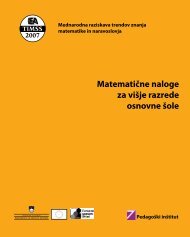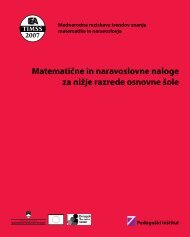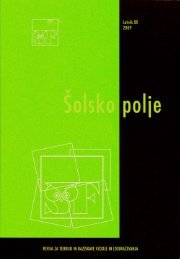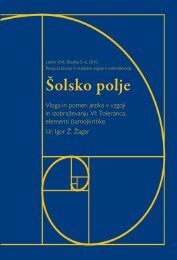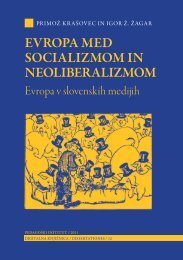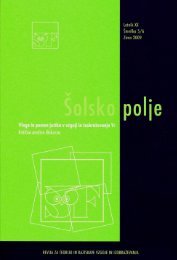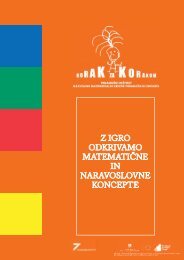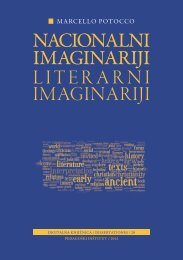Darko Štrajn, Umetnost v realnosti ... - Pedagoški inštitut
Darko Štrajn, Umetnost v realnosti ... - Pedagoški inštitut
Darko Štrajn, Umetnost v realnosti ... - Pedagoški inštitut
Create successful ePaper yourself
Turn your PDF publications into a flip-book with our unique Google optimized e-Paper software.
126<strong>Umetnost</strong> v <strong>realnosti</strong>was ideologically brutally stigmatized in the exhibition of “degenerateart,” (entartete Kunst) thus predated the repression of political opponents,the Jews and others.The theatre of Pupilija Ferkeverk was a phenomenon in the world oftheatrical movements in 1960s as simultaneously an aesthetical and socialmovement. Pupilija brought on stage a kind of acting, which exceededor determined the theatrical play as a culture, which integrates playingalmost in the area of meaning of the word “play” in a sense of primalinstinct. This Theatre also envisaged the media effect. Its messages andoften reduced gestures broke through the framework of theatre by beingchallengingly multi-meaningful, even inexplicable, what hasn’t been unintended.As much as 1960s are known for introducing a rehabilitationof insanity, which has been implemented by anti-psychiatry in a frameworkof wider “counter-cultural” movements, Pupilija proved with itsplay as a participant of this rebellion on the side of craziness against the“madness of the system.” The theatre of Pupilija was also very productiveand effective in view of presentation of the body. However, it should notbe forgotten that along with naked scenes, which in a given culture weresexually coded, the movement of bodies and constellation of actors onthe Pupilija’s stage should be taken into account. In the final act of theperformance Pupilija actually evoked a lost link to rural life and it signalledthe Slovenian shift away from tradition. Therefore, Pupilija triggereda liberating transition, which much in advance preceded the notorioustransition after the “end of communism.”The phenomenon of the artistic group Laibach shares a fate commonto most other examples of ground-breaking signifying aestheticpractices, at least from the early sixties all the way to the almost arbitrarilyshifting boundary of the period of avant-garde-ness in all its various“post-”, “retro-”, “para-” and other manifestations. Laibach, certainly,holds a somewhat unique place among such phenomena, since therecan be no doubt that, in its case – including of course its whole connectionwith Neue Slowenische Kunst – we are dealing with the most prominentand, in terms of its concepts and symbols, most sharply articulatedexample of a signifying practice within the processes of communism’scollapse and the questionable “victory of democracy.” The Laibach phenomenon,at least at the outset, needs to be viewed in relation to the categoryof event, particularly because of the circumstances, period and socialchanges in which it occurred. Laibach’s and whole NSK’s work wasturning around adaptations and re-enactments of significant events ororiginals from multifarious contexts and buried remembrances. Central




